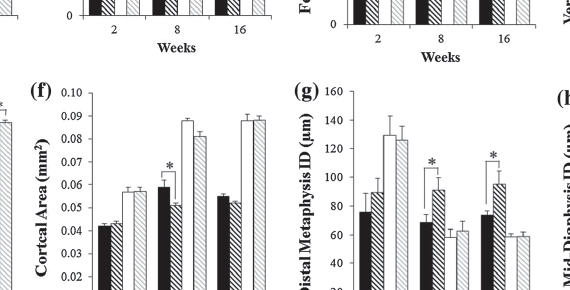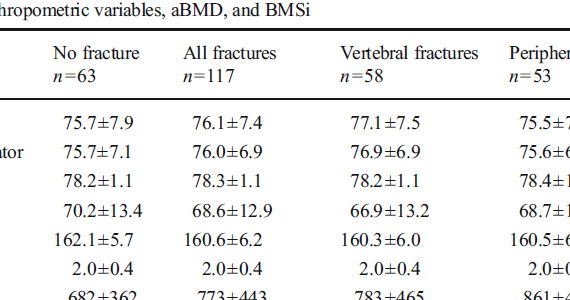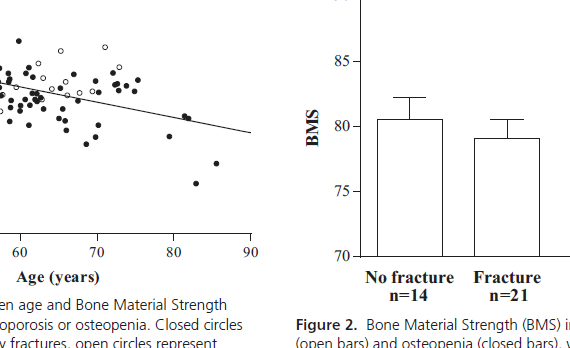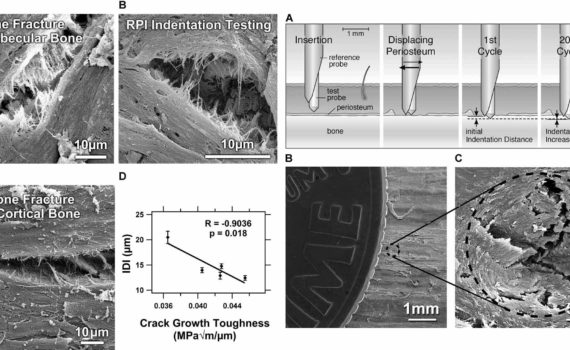Abstract Skeletal fractures are considered a chronic complication of type 2 diabetes mellitus (T2DM), but the etiology of compromised bone quality that develops over time remains uncertain. This study investigated the concurrent alterations in metabolic and skeletal changes in two mouse strains, a responsive (C57BL/6) and a relatively resistant (C3H/HeJ) […]
fracture
Abstract The global trend towards increased longevity has resulted in ageing populations and a rise in diseases or conditions that primarily affect older persons. One such condition is osteoporosis (fragile or porous bones), which causes an increased fracture risk. Vertebral and hip fractures lead to increased morbidity and mortality and […]
Abstract Reference point indentation is a novel method to assess bone material strength index (BMSi) in vivo. We found that BMSi at the mid-tibia was weakly associated with spine and hip areal bone mineral density but not with prevalent fracture in a population-based cohort of 211 older women. INTRODUCTION: Reference […]
Abstract CONTEXT: Bone mineral density (BMD) does not fully capture fracture risk as the majority of fractures occur in patients with osteopenia, suggesting that altered bone material properties and changes in microarchitecture may contribute to fracture risk. OBJECTIVE: This study aimed to evaluate the relationship between bone material strength (BMS), […]
Abstract Bone tissue mechanical properties are deemed a key component of bone strength, but their assessment requires invasive procedures. Here we validate a new instrument, a reference point indentation (RPI) instrument, for measuring these tissue properties in vivo. The RPI instrument performs bone microindentation testing (BMT) by inserting a probe […]





